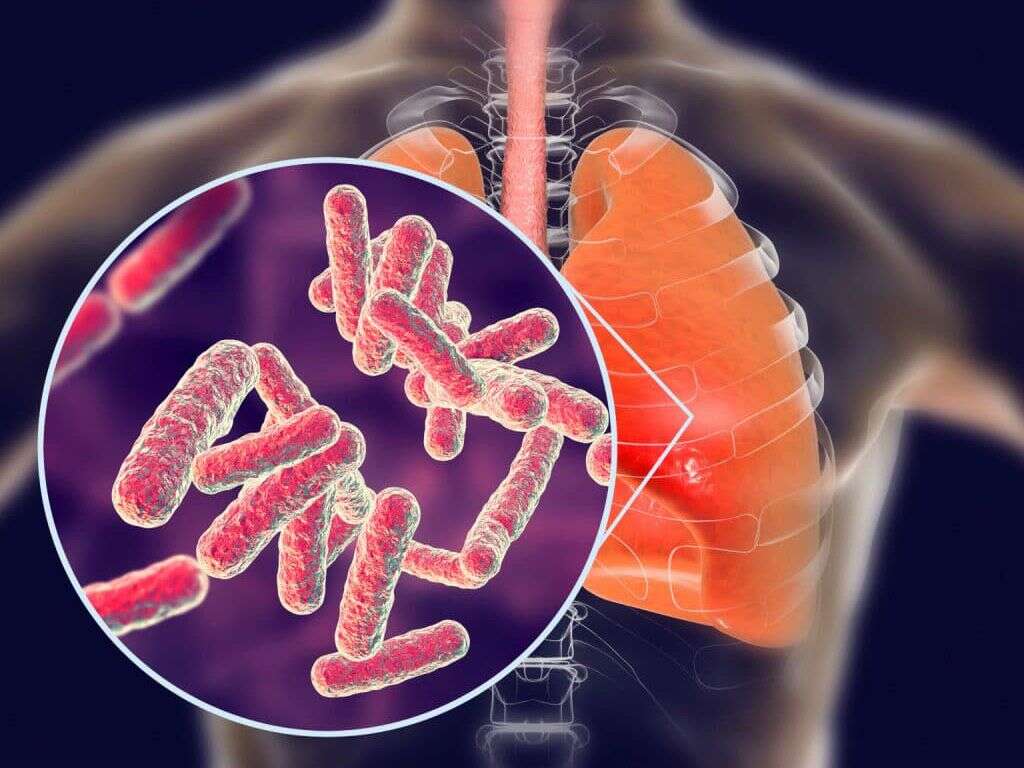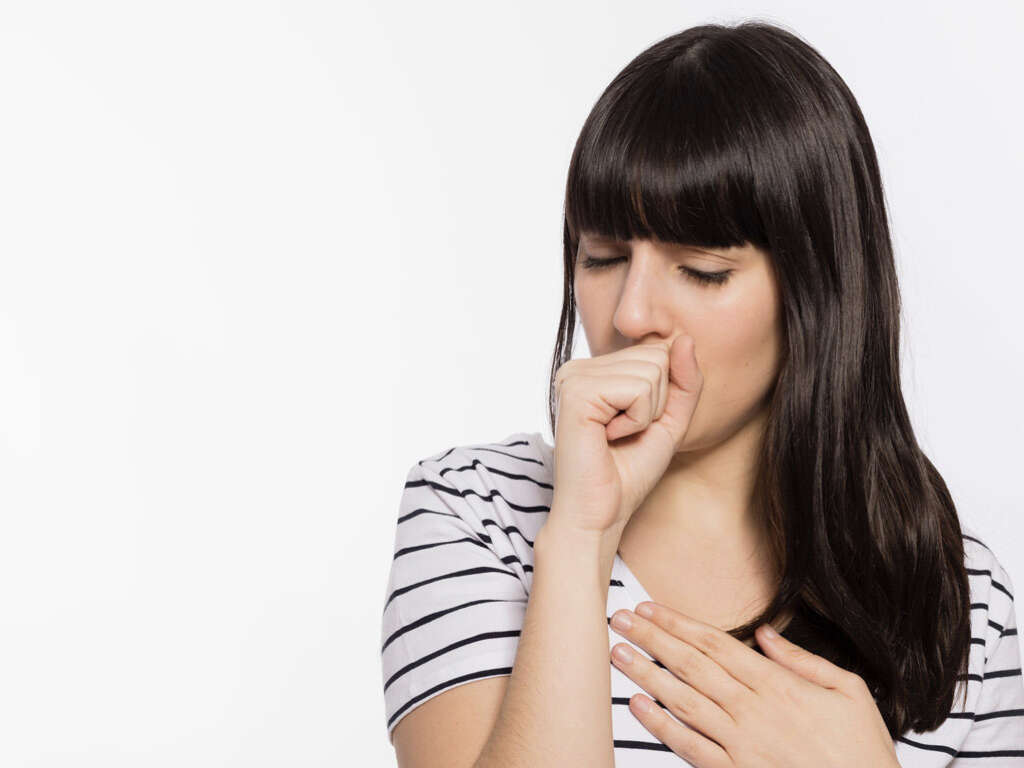10 Tuberculosis Symptoms
Tuberculosis is a disease caused by Mycobacterium tuberculosis. It is a bacterial infection that mostly affects the lungs, but other parts of the human body can be affected as well. Tuberculosis is a highly contagious disease and it spreads through the air when an infected person spreads the bacteria by coughing, sneezing, and talking.
There are two forms of tuberculosis: latent tuberculosis and active tuberculosis. Latent tuberculosis means that the bacterium remains inside the human body but in an inactive state. These person’s are not contagious, but the infection can become active at any point. Active tuberculosis, on the other hand, means that the person is contagious, transmitting the disease to others.
Tuberculosis can affect anyone at any age. It is believed that around one third of world’s population have latent tuberculosis. The primary screening method for TB is the tuberculin skin test, while the treatment is with antibiotics. In some countries, BCG injections are given immediately after birth in order to vaccinate against tuberculosis. Tuberculosis symptoms include:
Symptom #1: Persistent Cough
Because tuberculosis mostly affects the lungs, then symptoms such as a cough, difficulty breathing, or chest pain are quite common. Lung tissue is affected due to the strong immune response elicited by the rapid multiplication of organisms. If the infection is not contained by the immune system, a persistent dry cough can develop. A persistent cough lasting for three weeks or longer should be a warning sign. First, the cough is dry and irritating, but as the disease progresses it tends to get worse, eventually resulting in the production of a lot of phlegm (sputum) and even the presence of blood.
Symptom #2: Coughing Up Blood
Another symptom of TB infection is the expectoration of blood or blood-tinged sputum, called hemoptysis. Generally, blood that originates from the lower bronchial tree or lung tissue induces cough, whereas expectoration without cough is more consistent with an upper respiratory source.
Moreover, the lungs have a dual circulation– bronchial and pulmonary. As Mycobacterium tuberculosis enters the respiratory system it gets settled in the lungs where it starts multiplying and generating a vigorous immune response that results in lung tissue injury. Infection with M. tuberculosis generally causes bleeding from the pulmonary parenchyma (functional tissue). However, engorgement of dilated bronchial vessels and links (anastomoses) between both circulations, can also occur and lead to erosion and rupture of pulmonary capillaries and bronchial arteries. The overall management of hemoptysis is preventing aspiration of blood, bleeding cessation and treatment of underlying cause. Note that tuberculosis is not the sole cause of this symptom.

Symptom #3: Fatigue
General fatigue is another important symptom of tuberculosis. A person will feel constantly tired and with a lack of energy. No matter how much sleep and rest a person gets even daily activities become too difficult or impossible to perform.
This extreme tiredness and lack of energy occur because of the body’s attempt to fight the infection, lack of proper nutrition and loss of appetite, difficulties breathing, difficulties sleeping because of fever, chills, and night sweats, etc. Other than fever and fatigue, certain patients with primary pulmonary tuberculosis, especially young children, may not exhibit additional symptoms.
Symptom #4: Chest Pain
Many of those suffering from tuberculosis complain about chest pain. This pain is normally explainable by the fact that Mycobacterium tuberculosis enters the human body through the respiratory system, settling into the lungs, where it multiplies. Chest pain usually accompanies persistent coughing, but in advanced cases of tuberculosis, even breathing can cause quite a bit of discomfort and pain in the chest. The severity of chest pain will depend greatly on the progression of this bacterial infection, and from the individual as well. In serious cases, tuberculosis affects the parenchyma (tissue) of the lung, causing cavitations . However, it may also involve the airway. Furthermore, in some cases, it can extend to the serous membranes lining the thorax and enveloping the lungs, also known as pleura. This is a form of extrapulmonary tuberculosis and it may cause pleurisy or inflammation of the pleura. Pleurisy causes sharp chest pain that worsens during breathing.
Any pain in the chest area can be something serious and you should seek medical attention immediately. Tuberculosis might be causing your chest pain, but it can be related to other diseases as well, such as a heart attack and for this reason getting immediate medical help is necessary as it can save your life.

Symptom #5: Fever
One of the first symptoms of tuberculosis is fever, usually a low-grade fever, around 100 degrees Fahrenheit, lasting about 10 days and even more. Fever is controlled with fever-reducing medications and once the tuberculosis specific treatment starts, fever generally abates. Fever results as part of the body’s self-defense mechanism against Mycobacterium tuberculosis.
If a higher body temperature persists for a couple of days, then normally this should be an alarming sign that something is not right and that a person should seek medical attention. Note that tuberculosis is a rare cause of fever and it is not an exclusive symptom of this disease.
Symptom #6: Chills
Another sign of tuberculosis is experiencing chills, which can be constant and sometimes of a long duration. Chills refer to the sensation of coldness and shivering, and they generally precede fever episodes.
They are caused by rapid muscle contraction and relaxation and are the body’s way of producing heat when it senses cold or its temperature set point in the brain is altered by specific signaling molecules (i.e. endogenous or exogenous substances in the blood).

Symptom #7: Difficulty Breathing
As tuberculosis affects the parenchyma of the lungs and possibly the airways, difficulty breathing along with other lung symptoms can be observed. A shortness of breath is also quite common. Especially if the patient experiences severe episodes of cough and expectoration.
Furthermore, if there is pleural involvement, the patient may experience sharp pleuritic pain that may affect breathing. These breathing problems tend to get worse during physical activity. However, as the disease progresses, even routine daily activities may become too difficult due to breathing problems.
Symptom #8: Night Sweats
Night sweats are another common symptom of tuberculosis. Night sweats in tuberculosis patients may result by specific peptides and cytokines (i.e. TNF- alpha) produced from macrophages. Macrophages are white cells produced by the immune system when the body tries to fight this disease. This immune response also appears to be linked with the fevers, weakness, and progressive weight loss seen in tuberculosis infection. Night sweats can be caused by many medical conditions, but if they are accompanied by other tuberculosis symptoms you should consult a physician..
You will recognize these night sweats and sometimes it is going to be so noticeable that you will be sweating through the pajamas and bed sheets.

Symptom #9: Loss of Appetite
Difficulty breathing, cough, fever, and chills, when combined together, will definitely lead to a loss of appetite. Furthermore, anorexia in systemic inflammation is the result of many different signaling pathways (i.e. prostaglandin synthesizing enzymes) orchestrated by the brain. Also, appetite-regulatory hormones have been shown to be altered in patients with TB. This is a real problem among those suffering from chronic conditions as food is necessary for the proper functioning of the human body. In cases where a person is not getting the necessary nutrients and energy, recovering from this condition can be even more difficult.
A loss of appetite followed by a significant weight loss when suffering from tuberculosis greatly increases the risk of a relapse, even after medical treatment has started.
Symptom #10: Weight Loss
Weight loss is another symptom seen in tuberculosis. It may be a direct consequence of the appetite loss observed in patients with TB. Many patients diagnosed with tuberculosis lose significant weight in a short period of time.
However, most patients improve clinically and gain weight within weeks of starting treatment for the infection. Sadly, cachexia or a syndrome that involves extreme weight loss, muscle loss, appetite loss, and fatigue has been associated to poor prognosis and is a great risk factor for mortality. Furthermore, the exact mechanisms behind this wasting are poorly understood.




-06.jpg)



